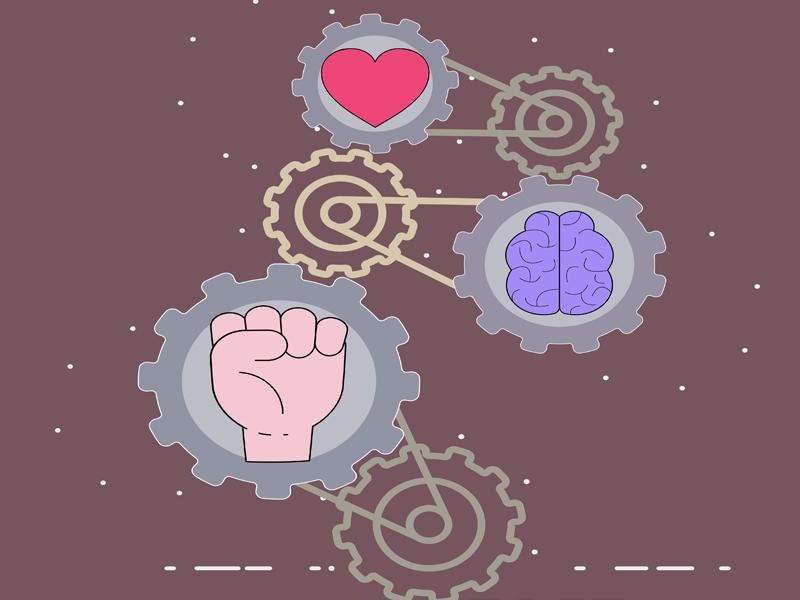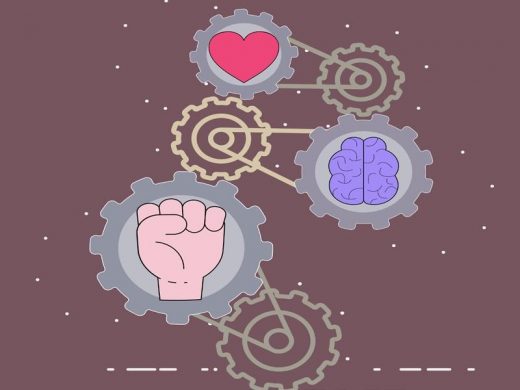Is ‘digital empathy’ an oxymoron?
Empathy can be good business, but only when companies proactively apply it.
“Dad, why do I see ads for jeans days and weeks after I already bought a new pair?” asked my 17-year-old daughter recently, “it’s not like the salesgirl at the Free People store follows me to my car after I make a purchase asking me if I want to buy the same item.” I try to explain to her that this is a data-driven targeting technique that has proven to be effective, but she cuts me off with “Dad, I think they just don’t care what I think or feel. It’s annoying, it makes me angry and I think they should know that!”
Once again, the “mouths of babes” got me thinking: maybe she is right. Data doesn’t care, technology doesn’t care, digital ads don’t care; people care and maybe we as an industry we have forgotten this.
Empathy is humanity

Empathy is our ability to understand and feel the experience of another from that person’s frame of mind. The term comes from the Ancient Greek empatheia, taken literally to mean “in passion.” Over the millennia, the concept has come to be recognized as one of our defining traits as human beings. This notoriously ambiguous concept can be viewed as three distinct yet intimately related ideas:
1. Emotional Empathy: This is our capacity to feel the emotions of another. We commonly advertise our emotional empathy when saying “I feel your pain” to a friend in distress. True emotional empathy involves more than simply emulating the emotional state of another person, however; it is to feel those emotions within the contextual variations that make them unique to the person with whom you empathize.
2. Cognitive Empathy: Cognitive empathy is our capacity to understand the circumstances that cause another to feel and act the way they do. More than sharing another’s emotional state, cognitive empathy allows us to combine feeling and knowing to develop a profound and holistic appreciation for what motivates others.
3. Somatic Empathy: Somatic empathy is a physical reaction mirroring a sensation experienced by another. Some examples of this particularly mysterious aspect of empathy include almost feeling the salty spray of the sea when watching someone sail on TV or sharing in the physical satisfaction when seeing someone else crack open and enjoy a cold drink. While rare today, as VR content and advertising expand, so too will our ability to elicit this deep form of empathy from consumers.
Empathetic communication works

Empathy is a deeply human phenomenon and no medium has greater capacity for inspiring empathy than the story. Through digital storytelling, an emotional bridge is created, linking viewer to storyteller via the characters in the story. We’ve all experienced moving stories and recognize their power to influence our feelings. Science backs up our intuition about the potency of story as demonstrated by the work of neuroeconomist Paul J. Zak.
Zak’s research has focused on the role of oxytocin, a neurotransmitter dubbed the “neurological substrate for the Golden Rule.” When we are treated with trust or kindness our brain releases oxytocin, which then encourages us to reciprocate this prosocial behavior.
In one experiment, Zak measured participants’ heart rate and sweat production while they watched short videos. He was able to track the ebb and flow of attention throughout each story and prove that when plots built up suspense in anticipation of a climax, participant attention increased significantly. An increase in oxytocin production closely followed this uptick in attention. As the characters on screen encountered and overcame conflicts, participants experienced elevated levels of oxytocin which allowed them to empathize with the characters and to share their journey.
Beyond immersing participants in the story, the release of oxytocin quantifiably impacted their decision making. Together with attention, oxytocin levels were positively correlated with participants’ willingness to donate money to “help” the characters on screen. Zak found that these two metrics predicted subsequent charitable behavior with 82% accuracy.
Empathy – through its neurological chemical processes – allows us to feel (emotional) and therefore understand (cognitive) the needs of the object of our empathy. As part of this shared sentiment, we are compelled to act to meet these needs. This applies to businesses as well as individuals.
Empathy is good business

Empathy inspires creativity. According to a study by Professors Kelly Herd and Ravi Mehta, designers think more creatively and produce more unique, effective products when their primary focus is to imagine how their potential customers might feel when using the products in question. It follows that marketers can arrive at original, practical and highly creative digital advertising that engages with consumers by considering first and foremost how those potential customers may feel when interacting with the brand and advertising.
Empathy builds trust. Every successful business knows that trust is the foundation of strong customer relationships. Building trust takes time, and when lost, is extraordinarily difficult to regain. Empathy is a powerful tool in a business’ arsenal when it comes to developing trusting relationships with potential customers as a truly empathetic business perceives their customers’ needs as their own and effectively meets those needs.
Empathy ensures customer-centricity. Thinking empathetically is an organic process. One’s feelings, needs and motivations are constantly in flux, and to empathize with another is to feel these changes along with them. So, while customers’ needs and the ways they feel about meeting them are ever-shifting, empathetic marketers feel, understand and react to these shifts as they occur, in real-time.
Empathy is good business, but only when companies proactively apply it.
Feel, think and do empathy

1. Be emotionally empathetic. In this age of infobesity, it can be difficult to pull anything “human” out of the mountains of data we accumulate. That is precisely why we must. Emotionally empathetic filters must be applied to existing methods of data collection and interpretation. What do the numbers tell us about how potential customers feel? More than “what do they need?”, we must ask “how do their needs arise?” “What motivates them to act on these needs?” and “how do they feel about meeting these needs?” We must employ emotional empathy to discover not only the what, but the why.
2. Ladder up to cognitive empathy. As marketers, we can take insights gained from emotionally empathizing with individual consumers and contextualize how potential customers feel within the greater market. A gap exists between customers’ feelings and perceptions of how to meet their needs, and companies’ own ideas about how to meet them. Through the contextualizing power of cognitive empathy, marketers can visualize that gap and find actionable solutions to bridge it.
3. Be relentlessly empathetic. We must constantly apply both emotional and cognitive empathy at all stages of the marketing process and actively seek practical, actionable strategies to intervene as customers’ needs and motivations evolve. Empathy is not a precursor element, or a seasoning applied at the table—it is a robust and profoundly human tool that must be consistently applied throughout the marketing process, from data acquisition through to sale.
My daughter reacts to her encounters with digital marketing with feelings of anger and annoyance. According to her own understanding of her needs, ads for jeans are redundant, obsolete and therefore bothersome. Her emotional engagement with the content is overwhelmingly negative due to an absence of empathy in the marketing process. I look forward to the day when the digital ecosystem of marketers, agencies and media re-find their humanity and my daughter shouts “Dad! Look how cute that top is, it will look great with the jeans I just bought!” as she leans in to show me an (empathetic) ad on her phone. For that, I will open my wallet.
Opinions expressed in this article are those of the guest author and not necessarily Marketing Land. Staff authors are listed here.
Marketing Land – Internet Marketing News, Strategies & Tips
(50)



